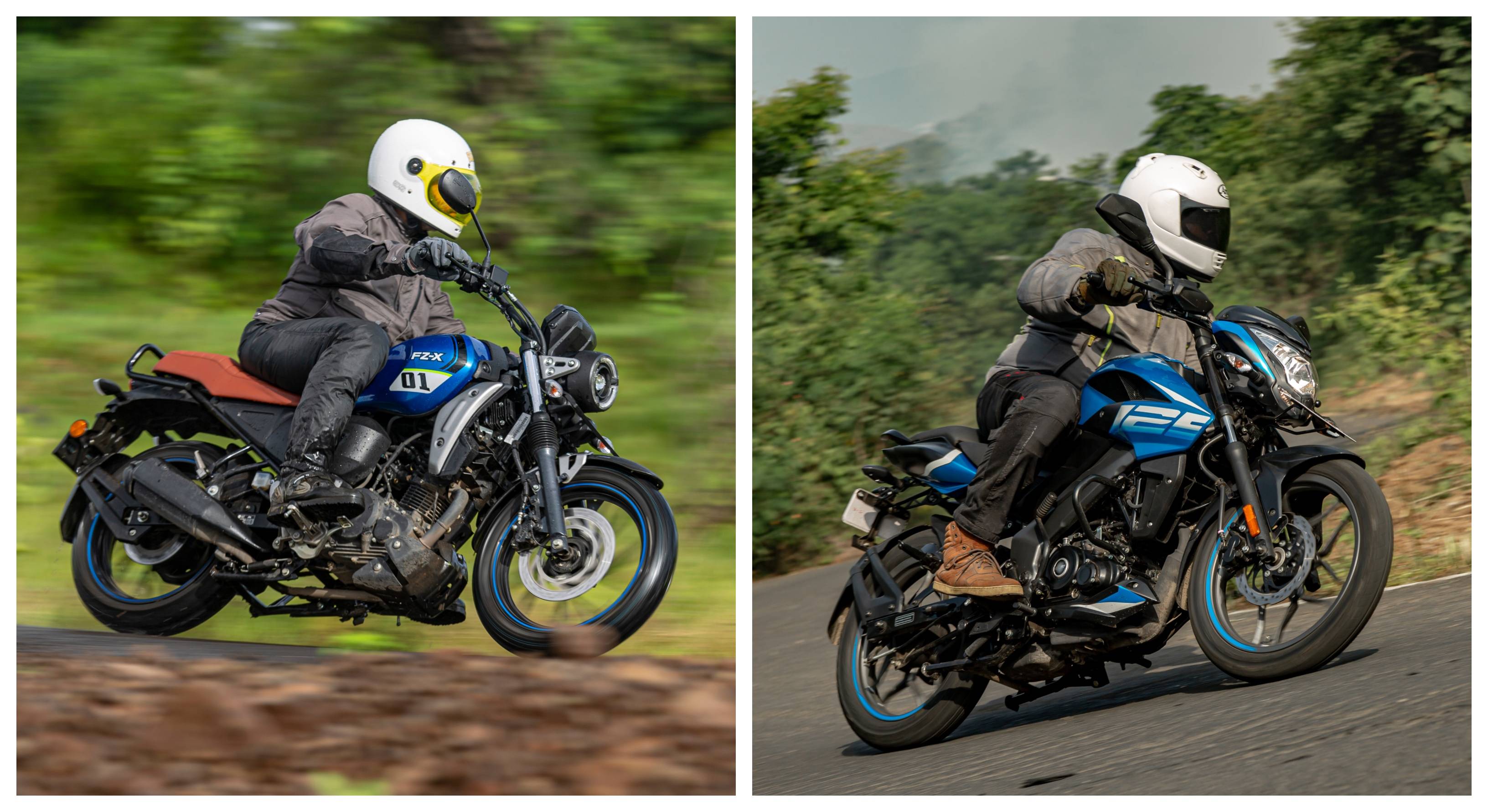Yamaha FZ-X vs Bajaj Pulsar NS125: Performance Numbers Compared
Published On Aug 11, 2021 09:03 AM By Manaal Mahatme for Yamaha FZ X
- 2464 Views
- Write a comment
There’s no replacement for engine displacement? We don’t think so

The country had been yearning for the Yamaha XSR155, but instead, got the Yamaha FZ-X. While enthusiasts wanted the peppy and sophisticated motor from the Yamaha R15 in a neo-retro avatar, the company chose its bestseller, the FZ FI to be the right platform. We tested the motorcycle recently and it left us with more questions than answers, more so because just before the FZ-X, we tested the Bajaj Pulsar NS 125 extensively. Here’s how the Japanese 150cc bike fares against the sporty 125cc Indian motorcycle:
Acceleration:
There’s no replacement for engine displacement, you say? The Yamaha FZ-X begs to differ. Both the bikes come with simple air-cooled engines with Single Overhead Camshafts (SOHC) construction. However, the 149cc mill uses only 2 valves while the 4 valve-equipped 124cc motor on the NS125 allows it to put down its 12PS more efficiently than the 12.4PS on the FZ-X. Not only did the NS125 accelerate quicker, but also managed to breach the 100kmph mark, while FZ-X ran out of breath at 96kmph.
- EXCLUSIVE: Simple One Electric Scooter Details Revealed Ahead Of Launch
- Yamaha YZF-R15 V3 vs 2021 KTM RC 200: Buy Or Hold?
- 2021 TVS Apache RTR 160 4V: Road Test Review
Roll-ons:
These figures demonstrate the mid-range grunt of the engine, and despite the smaller engine and the 5kg heft over the Yamaha FZ-X, the Bajaj Pulsar NS125 is quicker by 3.2 seconds! Though the Yamaha manages to shorten the gap in the 40-80kmph sprint, it still loses to the baby NS.

Braking:
The Yamaha FZ-X boasts of a 282mm/220mm disc brake setup aided by single-channel ABS, which on paper, is superior to the NS125’s 240mm disc and 130mm drum brake setup. However, the dual purpose tyres on the Yamaha do not inspire confidence and tend to wash out easily and plays a major role in hampering the braking performance. That said, with the CBS and lack of progression at the rear brake, the NS125 too could scare you. Not only does the simpler setup from Bajaj manage to outshine the FZ-X, but is also on par with the KTM 125 Duke, which flaunts better hardware, single-channel ABS and grippier tyres.

Fuel Efficiency:
The Yamaha FZ-X has one of the best city fuel-efficiency figures in its class. However, there’s no beating the smaller and better breathing engine on the Bajaj Pulsar NS125. Not only does the Bajaj beat the Yamaha on the city runs but also on the highway by a fair margin. Adding to the woes of the Yamaha is the 10 litre fuel tank, 2 litres smaller than the Pulsar’s and 3 litres than the FZ FI, which means you’ll end up refueling more of the FZ-X.

Verdict:
The Yamaha FZ-X certainly boasts more features than the Bajaj Pulsar NS125, like the bluetooth-enabled console and LED illumination. But is it really worth the extra Rs 22,000 you’ll splurge over the NS125? We don’t think so. Unless you are sold on the unique styling of the FZ-X and the features, the baby NS will certainly bring a smile to your face.
